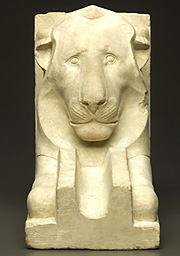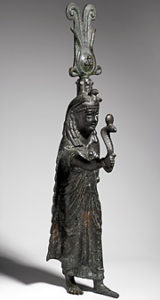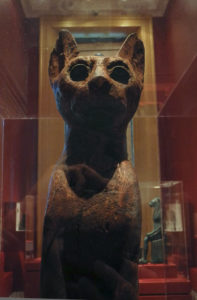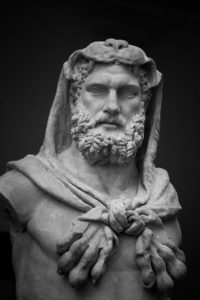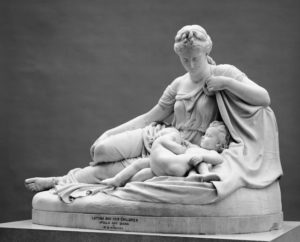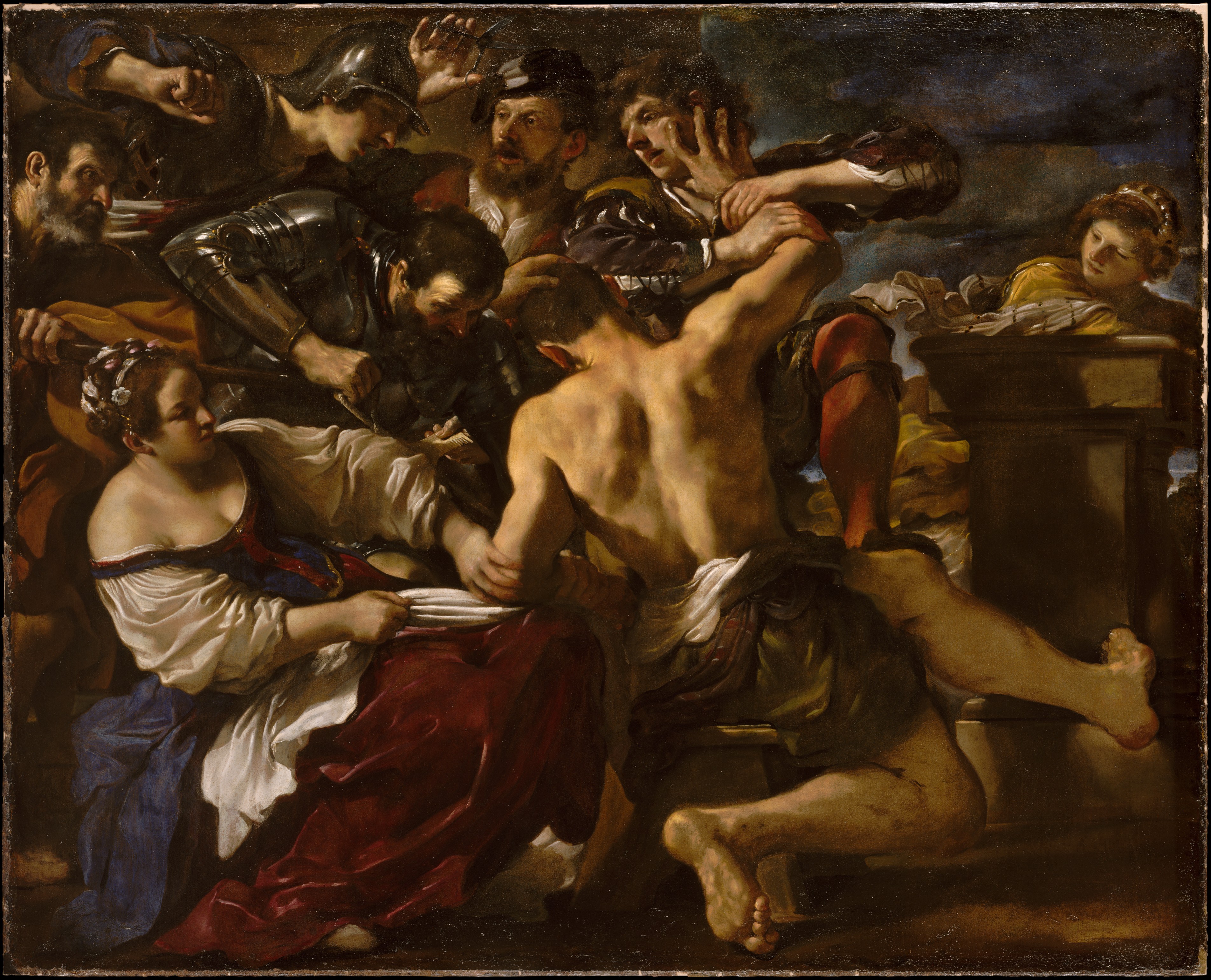This was my second trip to the MET museum, my first when I was 7 years old, and only in second grade. This time, I was able to soak in a greater amount of the content that the museum had to offer, being that I now have background on pieces and historical eras. In second grade analyzing art was a skill that I had yet to acquire.
The first painting that I encountered was titled Christ Appearing to His Mother”. It is an oil painting created by Juan de Flandes. It’s stability is an eye catching feature that gives away its era of creation, the Renaissance. The painting has a lot of structure to it, and an emphasis on vertical lines, especially in the architecture of the building. Additionally, the background seems extremely distant from the viewer as well. Depth is created, as we can see 3 distinct areas of a room, the front where they are standing, the hallway slightly more behind, and the tiny town in the far background. The lines are very sharp, and straight, depicting little to no motion in the piece.
The second piece of art that I looked at was another oil painting titled “The Annunciation of the Death of the Virgin, by Samuel van Hoogstraten. Unlike in “Christ Appearing to His Mother”, this image was more dramatized, which is a common feature of Baroque art . Here, an Angel is drawn swooping down at a diagonal angle from Heaven. The diagonal line is a distinct difference, as in Renaissance art, more structured is apparent through the use of horizontal and vertical lines. Moreover, the artist used the technique of “smoking,” in which he smoothed out and lessened the sharpness of lines, to give a sense of energy and movement to the piece. These curvatures are generally seen more in Baroque art then in Renaissance art. The clouds were also shaded, adding contrast from the rest of the piece. This feature of shading gave the artwork a sense of realisticness, and less like a drawing. Finally, unlike in the “Christ Appearing to His Mother”, everything seems to be happening in the foreground. Everything seems very close, due to its placement and largeness in scale.
Overall, the features of diagonal lines, shading, smoking, placement and dramatism allow for Baroque art to capture a moving moment in time. In Renaissance art, it seems that the artist is able to capture a still, motionless event, due to the techniques of more structure through having distinct backgrounds and sharp vertical and horizontal lines.
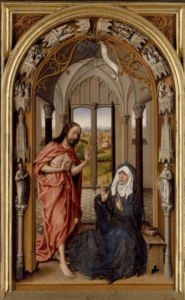
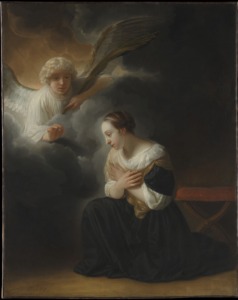
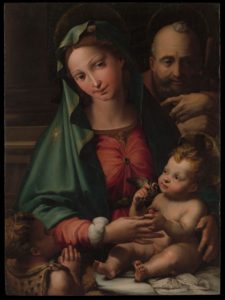
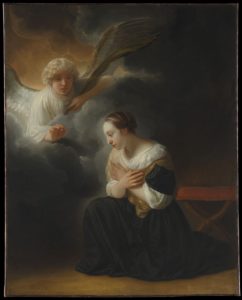
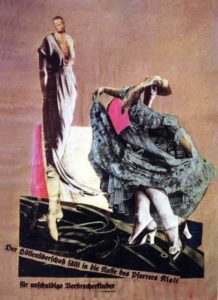
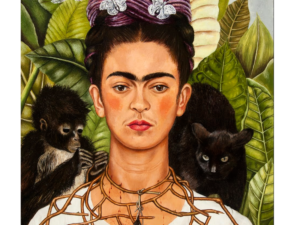
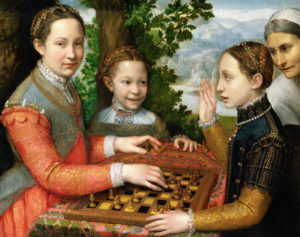
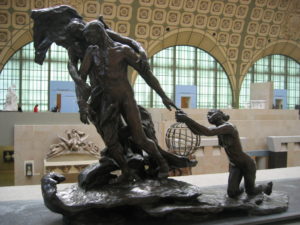
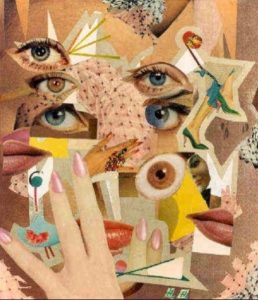
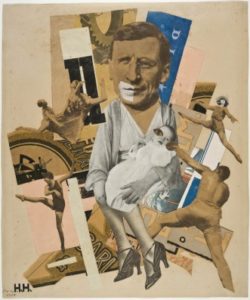

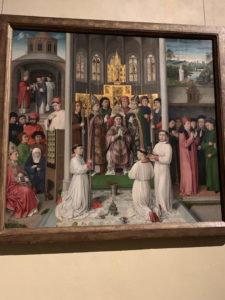
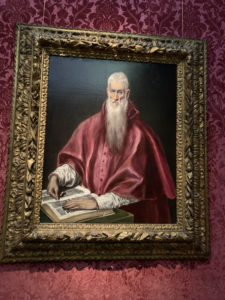

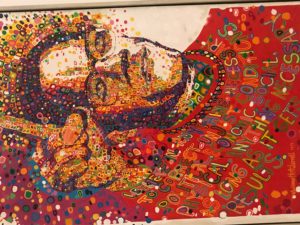 Carolyn Lawrence, Malcolm X
Carolyn Lawrence, Malcolm X  Carolyn Lawrence, Uphold Your Men, 1971
Carolyn Lawrence, Uphold Your Men, 1971  Adger Cowans, Shadows, New York 1961
Adger Cowans, Shadows, New York 1961 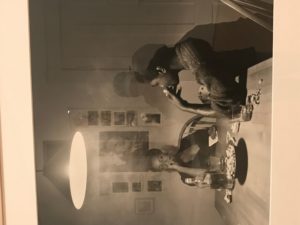 Carrie Mae Weems, Untitled (Man Smoking /Malcolm X)
Carrie Mae Weems, Untitled (Man Smoking /Malcolm X) 

